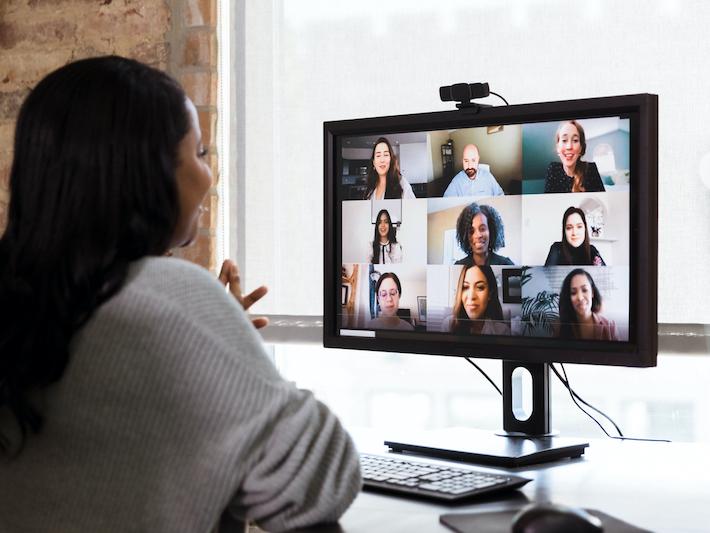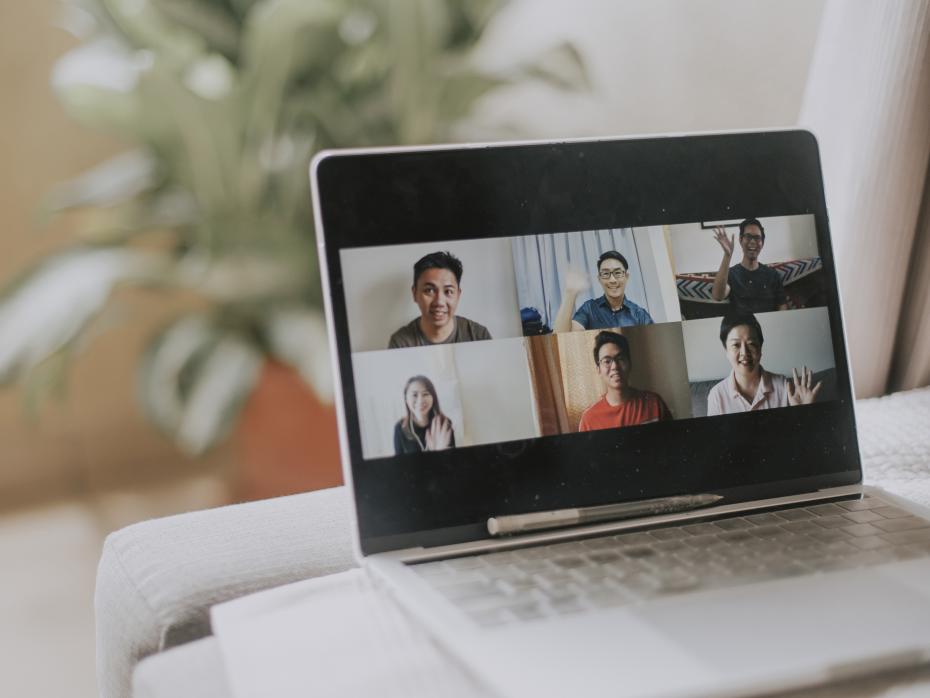
Funny memes and other ways to encourage students to keep their cameras on

“I can better pace if I can see your face!” “Many students report that having cameras on makes class more enjoyable!” These are two of the reasons we gave to students in our introductory biology laboratory course this past semester to encourage them to turn on their cameras during synchronous remote classes introduced as a result of the pandemic.
I often used the above phrases of encouragement in a slide shown at the start of Zoom classes along with an explicit request: “Please turn on your cameras for the entire class, if you are comfortable doing so.” To capture student attention for this repetitive message in lab after lab, I also included a humorous meme of the week relating to student camera use, often created by past students of the course.
These slides helped to accomplish at least four things: make an explicit request for students to use their cameras; provide reasons for the request to gain student buy-in; establish the social norm from the get go; and maintain that norm throughout the semester.
Using these slides was part of the evidence-based strategy my colleague Mark A. Sarvary and I developed to encourage student camera use without requiring it. We implemented this strategy across our large enrolment course (about 300 students) at Cornell University with two dozen lab sections taught by a dozen graduate student instructors and their undergraduate teaching assistants. The strategy seems to have worked, as self-reported camera use increased from the previous semester.
We encourage camera use because it is beneficial for teaching and learning in several ways. The most obvious benefit is non-verbal communication. Head shaking and nodding and looks of confusion or boredom are valuable cues for an instructor to adjust their teaching in real time by moving on, slowing down or repeating information.
Students readily leave comments in their evaluations pointing out when teaching is “too fast” or “too slow”. Explaining this benefit to students while requesting they turn on their cameras seems to help.
Also, simply asking students to use their cameras is itself an effective and important tactic. To develop our strategy to encourage camera use, we surveyed our students to find out the reasons why they chose to turn off their cameras during class. Several indicated that they would have turned on their camera if their instructor had asked them to. Others indicated that they were trying to be respectful to their instructor by not turning their camera on during a lesson.
Ironically, some instructors feel disrespected when students leave their cameras off. Communicating camera-use policies, including when it is appropriate to have them on or off, should help put students and instructors on the same page.
Another useful thing we learned from surveying students is that social norms are playing a role. The most popular answer among the open comment responses, by far, was some indication that it was the social norm of the virtual classroom. For example, students wrote: “No one else had it on so I shut mine off as well” and “[Our class] kept ours off.”
According to theory, two types of norms are likely to improve camera usage among your students: the perception of how most others ought to behave and the perception of how most others are behaving. We strategised that instructors should explicitly and consistently request that students turn on their cameras, if they are comfortable doing so, to communicate what students ought to do.
Consequently, if most students then turn on their cameras, they may notice how others are behaving.
It’s important that the classroom norms be established at the start of a course and be explained consistently throughout for there to be a good chance of maintaining camera use. If reminders stop, we suspect students may turn off their cameras, leading to a flip in what most others are doing.
We also argue that the norm must include that students have the option of not turning on their cameras, if they are not comfortable doing so. Mandating camera use may contribute to the stress students are already feeling during the pandemic. Furthermore, such negative impacts may disproportionately affect students who are underrepresented in the sciences. Our underrepresented students were more likely to select “concern about other people and physical location being seen in the background” as reasons for not turning on their cameras in our anonymous survey.
Instructors can convey what are acceptable reasons to not turn on cameras. For example, I created a slide that included a student-made meme comically depicting the need to shield classmates from family members fighting in the background.
Camera use in synchronous virtual classrooms will remain an issue, even as Covid-19 restrictions begin to wane.
Enrolment in courses taught remotely has been on the rise in higher education and the recent surge in the development of and familiarity with videoconferencing technology will likely only boost this trend. As educators, we should continue to encourage students to use their cameras, for their benefit as much as ours.
Frank R. Castelli is a postdoctoral researcher at Cornell University.
Additional Links
For more ideas on this topic, read our research article “Why students do not turn on their video cameras during online classes and an equitable and inclusive plan to encourage them to do so”.


